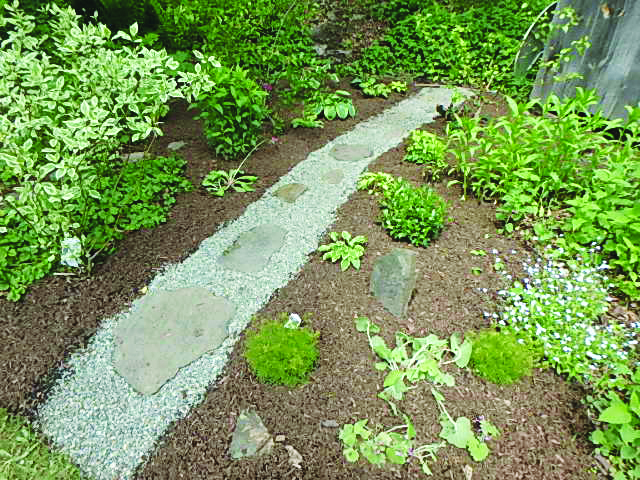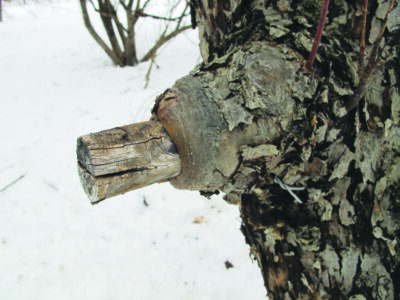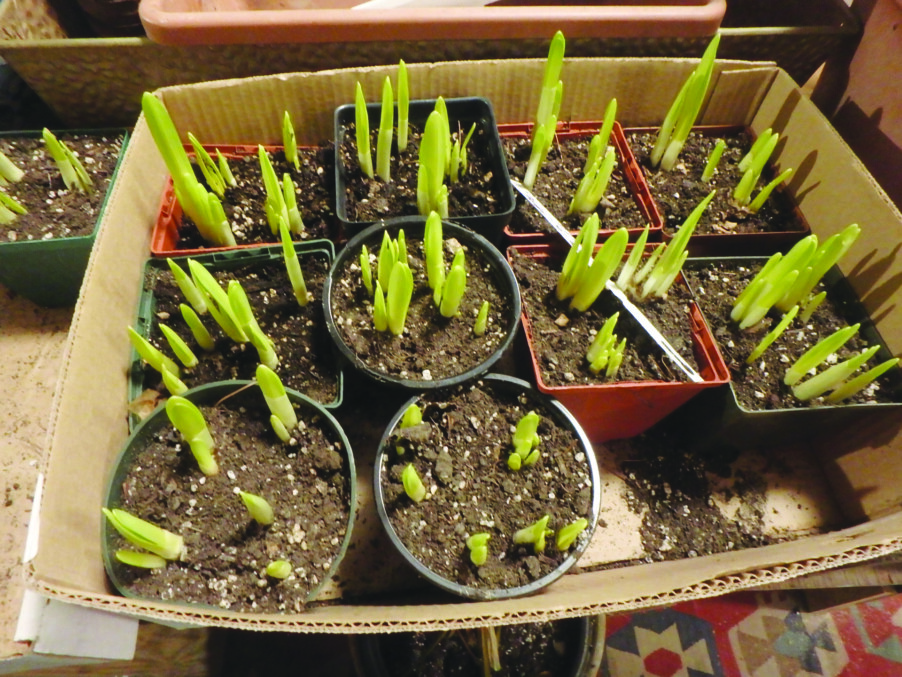Gardening in difficult conditions
By Henry Homeyer
listings@hippopress.com
The very last day of May this year surprised me: We got three inches of rain in a little over 12 hours. Although not unheard of, it came after a month when we often got an inch or two of rain over a two- or three-day period. The ground is soggy, our brook is overflowing — and we have no way of knowing if the summer will continue wet or turn hot and dry. As gardeners in uncertain times, it helps to plan for the worst and celebrate when we have the best. Let’s look at what you can do to help your plants survive.
First, if you have a big rain, the best thing you can do is STAY OUT OF THE GARDEN. Wet soil compacts when you walk on it, making it less hospitable for plants because they get nutrients, water and oxygen through their roots. You already know better than to walk in your growing beds, both in the vegetable and flower gardens. But your lawn will suffer, too, if you walk on it while wet, and your footprints may make it lumpy.
We have lots of wide flower beds, wide enough that we cannot weed some of them while standing on the lawn. So we place flat stepping stones in the beds, strategically placed so we can step on them to weed or pick flowers for vases in the house. This being New Hampshire, we seem to have a good supply of relatively flat stones to use. If we dig one up, we save it for future use. If you don’t have stones, you can buy them from garden centers. Look for stones that are larger than your shoe, but get some bigger ones, too.
We also make pathways through large beds. We have a bed of candelabra primroses (Primula japonica) that is approximately 25 feet by 30 feet in size that contains hundreds of these beauties. We designed and built three pathways through and around it. And although we cannot access it all, it helps.
First we picked a route. Then we dug up and moved primroses and weeds to create a pathway about 18 inches wide. I find the CobraHead Weeder (cobrahead.com) can get under even mature plants and lift them, undamaged, for moving. This works best if the soil is moist — not a problem this summer. We got a nice rootball with each if we inserted the CobraHead in three or four places and loosened the soil a little before lifting the plant.
For our walkways we put down landscape fabric and pin it in place with landscape staples. We avoid woven landscape fabric, as weeds tend to grow through it. We use an almost see-through spun fabric, which does well by us. We cover the fabric with a 2-inch layer of quarter-inch washed pea stone that I buy at a gravel company and bring home in my trusty, rusty 2004 Toyota pickup truck. Lastly, we spread some finely ground bark mulch along the edges of the path to help keep weeds and soil from migrating into the walkway. Steel edging would be good, but it’s expensive.
Bark mulch is good in both wet times and dry times. Persistent weeds can grow through it, even a layer an inch-and-a-half thick. But it reduces weeding considerably. It helps to minimize evaporation in hot, dry weather, too. In wet times some weeds will grow in it — but they can’t hold on as well as in soil, so they pull easily.
Raised beds are great in wet times. I have a wooden one I built using rough sawn pine that is 16 inches tall. I filled it with a mixture of garden soil and compost I buy loose in bulk. You can buy both at good garden centers, and a 50-50-mix works well, though I sometimes add peat moss and perlite if the mix is too heavy. In these recent rains my raised bed stood happily above the water-filled walkway around it.
Mostly in the vegetable garden I make 30- to 36-inch-wide raised beds without wood sides. I just hoe up soil from the walkways into a bed that stands up 6 inches above the walkway. Our dog, Rowan, seems to instinctively know not to run through the beds. I work lots of compost into the soil to keep it light and fluffy.
The walkways I mulch with a layer of newspaper (three or four pages thick) covered with straw. I can use the same technique around big plants like tomatoes or Brussels sprouts. Onions and carrots? I just fit some straw in between the rows.
Peonies are a problem in wet times. Double peonies, those that have a blossom packed with petals, get heavy when wet. They flop over and sometimes the stems break. Metal peony rings are sold — they are like tomato cages but wider and lower. It is best to install them in April, before they get tall and bushy. Even so, I find they often don’t work — they are too short to protect tall stems.
What I prefer for peonies and other tall plants is to install three stakes around them, and then encircle the clump about two-thirds the way up with green garden string. For plants like peonies, I use bamboo stakes. For taller, heavier plants like New York ironweed or ‘Henry Eiler’ Rudbeckia, I use 4-foot-long 1-inch hardwood grade stakes that I paint green to disguise them. I drive them into the ground with a 3-pound sledge.
The bottom line is this: Despite all we do to prevent damage by storm or drought, not every plant is going to look its best all summer. So I focus on the beauty of the successful plants, and dream of sunny days punctuated with an occasional shower.
Reach Henry by e-mail at henry.homeyer@comcast.net or by mail at PO Box 364, Cornish Flat, NH 03746.







